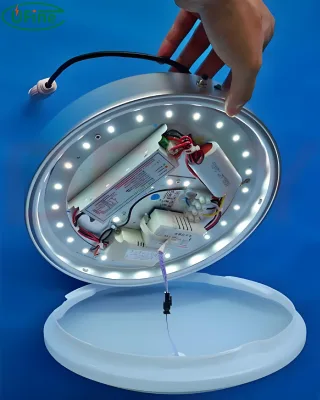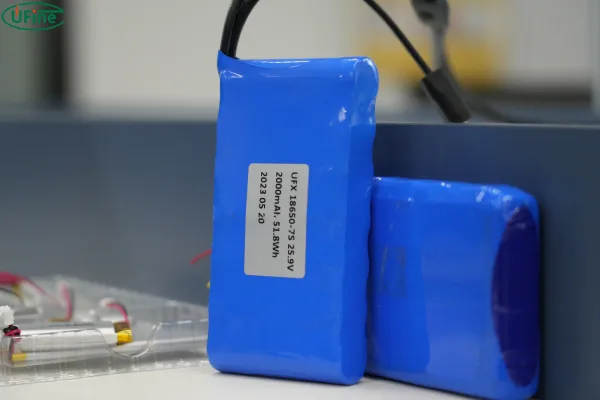In the unpredictable world of power outages, emergency lighting systems stand as a crucial safety measure, ensuring visibility and preventing accidents. These systems rely on emergency lighting batteries, which provide backup power when the main power supply fails. However, with numerous battery types and technologies available, choosing the right emergency lighting battery can seem daunting. This comprehensive guide will delve into the intricacies of emergency lighting batteries, exploring their types, characteristics, key parameters, and the factors to consider when selecting the ideal battery for your specific application.
Part 1. Understanding lighting batteries
Emergency lighting batteries are designed to provide a reliable source of power for emergency lighting systems during power outages. They are typically connected to a dedicated circuit that is separate from the main power supply. When the main power fails, the emergency lighting battery automatically activates, powering the emergency lighting fixtures and ensuring visibility in critical areas.
Part 2. Emergency lighting battery types
Emergency lighting batteries are classified based on their chemical composition, each type offering a unique set of advantages and disadvantages. Here’s a detailed look at the most common battery types:
a) Lead-Acid Batteries:
- Description: Lead-acid batteries are the most prevalent type of emergency lighting battery due to their affordability, long lifespan, and ease of maintenance. They consist of lead plates immersed in an electrolyte solution of sulfuric acid.
- Advantages:
- Cost-Effective: Lead-acid batteries are relatively inexpensive compared to other battery types.
- Long Lifespan: They have a long cycle life, meaning they can withstand numerous charge and discharge cycles before their capacity significantly degrades.
- Easy Maintenance: Lead-acid batteries require regular watering to maintain their electrolyte levels.
- Disadvantages:
- Heavy: Lead-acid batteries are relatively heavy, making them less suitable for portable emergency lighting systems.
- Requires Regular Maintenance: They require periodic watering to maintain the electrolyte levels, which can be inconvenient.
- Environmental Concerns: Lead-acid batteries contain lead, which is a toxic metal. Proper disposal is essential to minimize environmental impact.
- Applications: Lead-acid batteries are well-suited for general-purpose emergency lighting applications in buildings, commercial spaces, and industrial settings where moderate power requirements and ease of maintenance are priorities.
b) Nickel-Cadmium (NiCd) Batteries:
- Description: NiCd batteries are known for their long lifespan and resistance to extreme temperatures. They consist of nickel oxide electrodes and cadmium electrodes immersed in an alkaline electrolyte solution.
- Advantages:
- Long Lifespan: NiCd batteries have a longer lifespan than lead-acid batteries, making them suitable for applications where long-term reliability is crucial.
- Temperature Resistance: They can withstand a wider range of temperatures compared to other battery types, making them suitable for extreme environments.
- Environmentally Friendly: NiCd batteries contain less lead than lead-acid batteries, making them a more environmentally friendly option.
- Disadvantages:
- Memory Effect: NiCd batteries exhibit a memory effect, meaning they can lose capacity if they are not fully discharged before being recharged.
- Higher Cost: NiCd batteries are typically more expensive than lead-acid batteries.
- Applications: NiCd batteries are ideal for applications where long life, temperature resistance, and environmental friendliness are crucial, such as in industrial settings, remote locations, and emergency lighting systems in harsh environments.
c) Nickel-Metal Hydride (NiMH) Batteries:
- Description: NiMH batteries offer higher energy density than NiCd batteries, meaning they can store more energy in the same size. They consist of nickel oxide electrodes and a hydrogen-absorbing alloy electrode immersed in an alkaline electrolyte solution.
- Advantages:
- High Energy Density: NiMH batteries have a higher energy density than NiCd batteries, allowing them to provide more power for the same size.
- Lower Memory Effect: They have a lower memory effect compared to NiCd batteries, making them less susceptible to capacity loss due to partial discharges.
- Disadvantages:
- Temperature Sensitivity: NiMH batteries are more sensitive to temperature changes than NiCd batteries, meaning their performance can be affected by extreme temperatures.
- Shorter Lifespan: NiMH batteries have a shorter lifespan than NiCd batteries.
- Applications: NiMH batteries are suitable for applications where high energy density, low memory effect, and moderate temperature resistance are important, such as in portable emergency lighting systems and applications where space is limited.
d) Lithium-Ion (Li-Ion) Batteries:
- Description: Li-Ion batteries are the most advanced type of emergency lighting battery, offering the highest energy density, longest lifespan, and lightest weight. They consist of lithium-containing electrodes and an electrolyte solution that allows lithium ions to move between the electrodes during charge and discharge.
- Advantages:
- High Energy Density: Li-Ion batteries have the highest energy density among common battery types, allowing them to store a significant amount of energy in a compact size.
- Long Lifespan: They have a longer lifespan than other battery types, making them suitable for applications requiring frequent use and long-term reliability.
- Lightweight: Li-Ion batteries are significantly lighter than lead-acid batteries, making them ideal for portable emergency lighting systems.
- Environmentally Friendly: Li-Ion batteries are more environmentally friendly than lead-acid and NiCd batteries, as they contain fewer toxic materials.
- Disadvantages:
- Higher Cost: Li-Ion batteries are the most expensive type of emergency lighting battery.
- Requires Dedicated Charging System: They require a dedicated charging system that is specifically designed for Li-Ion batteries.
- Applications: Li-Ion batteries are ideal for high-end emergency lighting systems, portable emergency lighting fixtures, and applications where high energy density, long lifespan, and lightweight design are paramount.
Part 3. Key parameters for choosing the right emergency lighting battery

When selecting an emergency lighting battery, consider these key parameters to ensure the battery meets your specific needs:
-
Capacity: Battery capacity is measured in Ampere-hours (Ah), indicating the amount of electrical charge the battery can store. A higher capacity battery can provide power for a longer duration. The required capacity depends on the power consumption of the emergency lighting system and the desired backup time. For example, a system with a higher power consumption might require a battery with a larger capacity to provide the same backup time as a system with lower power consumption.
-
Voltage: The battery voltage must match the voltage requirements of the emergency lighting system. Common voltages for emergency lighting batteries include 12 volts and 24 volts. Using a battery with a voltage that is too high or too low can damage the emergency lighting system.
-
Discharge Rate: The discharge rate, measured in C-rate, indicates how quickly the battery can deliver its capacity. A higher discharge rate is necessary for applications where high power is required. For example, a system with a high power draw, such as a large number of emergency lights, might require a battery with a higher discharge rate to provide sufficient power.
-
Cycle Life: The cycle life indicates how many times the battery can be charged and discharged before its capacity significantly degrades. A higher cycle life is desirable for batteries that are frequently used, such as in emergency lighting systems that are regularly tested.
-
Self-Discharge Rate: The self-discharge rate indicates how quickly the battery loses its charge when not in use. A lower self-discharge rate is desirable for batteries that are stored for long periods, ensuring they retain a significant charge when needed.
-
Operating Temperature Range: The operating temperature range indicates the temperatures at which the battery can safely operate. Choose a battery with an operating temperature range that is suitable for your environment. For example, a battery used in a cold climate might require a wider operating temperature range than a battery used in a temperate climate.
-
Safety Features: Look for batteries with safety features such as overcharge protection, overdischarge protection, and short circuit protection. These features help prevent damage to the battery and ensure safe operation. Overcharge protection prevents the battery from being overcharged, which can damage the battery and reduce its lifespan. Overdischarge protection prevents the battery from being completely discharged, which can also damage the battery. Short circuit protection prevents excessive current flow, which can cause overheating and damage to the battery.
Part 4. Choosing the right emergency lighting battery
Selecting the ideal emergency lighting battery involves considering your specific needs and the characteristics of each battery type. Here’s a practical guide to help you make the right choice:
-
For general-purpose emergency lighting in buildings and commercial spaces: Lead-acid batteries are a cost-effective and reliable option, especially for moderate power requirements. Their long lifespan and ease of maintenance make them suitable for most general applications.
-
For applications requiring long life and temperature resistance: NiCd batteries are a good choice for industrial settings, remote locations, and emergency lighting systems in harsh environments. Their ability to withstand extreme temperatures and their long lifespan make them suitable for demanding applications.
-
For applications requiring high energy density and low memory effect: NiMH batteries are suitable for portable emergency lighting systems and applications where space is limited. Their higher energy density allows them to provide more power in a compact size, while their lower memory effect reduces the risk of capacity loss due to partial discharges.
-
For high-end emergency lighting systems, portable emergency lighting fixtures, and applications demanding high energy density, long lifespan, and lightweight design: Li-Ion batteries are the premium choice. Their high energy density, long lifespan, and lightweight design make them ideal for demanding applications where performance and portability are crucial.
Part 5. Final words
Choosing the right emergency lighting battery is essential for ensuring safety and visibility during power outages. By understanding the different types of batteries, their key parameters, and the factors to consider when selecting, you can make an informed decision that meets your specific needs. Whether you’re equipping a commercial building, a residential home, or a portable emergency lighting system, the right emergency lighting battery will provide reliable backup power and ensure visibility during critical situations, safeguarding lives and property.
Related Tags:
More Articles

Li-Ion vs. Lead-Acid for Floor Scrubber: How to Choose?
Wondering which floor scrubber battery is better? Compare Lithium-Ion vs. Lead-Acid batteries for performance, lifespan, and cost. Make the right choice!
Vacuum Cleaner Battery Guide: Power, Types & Lifespan
Discover vacuum cleaner battery types, performance, lifespan, cost, and maintenance tips. Learn to pick, replace, and care for your vacuum’s power source.
How to Choose the Best Battery for Your Floor Machine?
Find the best floor machine battery for performance, durability, and long life. Ufine Battery offers reliable custom lithium battery solutions.
The Ultimate Guide to Humidifier Batteries
Portable humidifier batteries explained—find the right capacity, charging speed, and maintenance tricks for your device.
What Does Battery Group Size Mean?
Battery group size refers to a battery's standard dimensions and terminals. It ensures proper fit and performance for your car or equipment.





